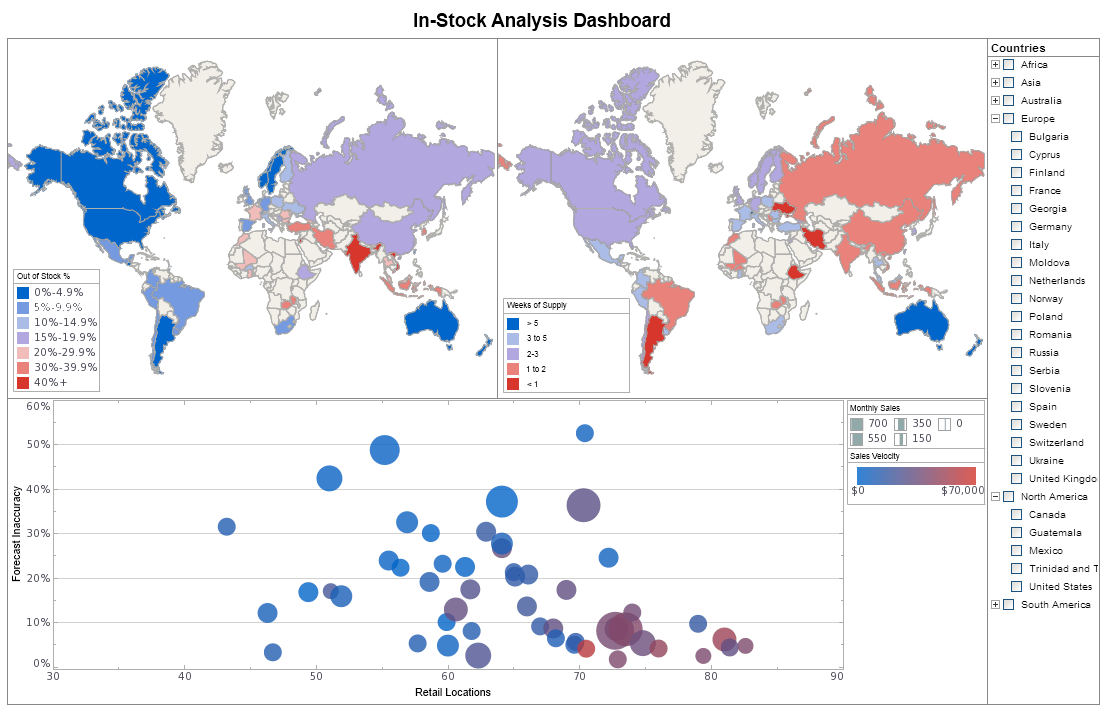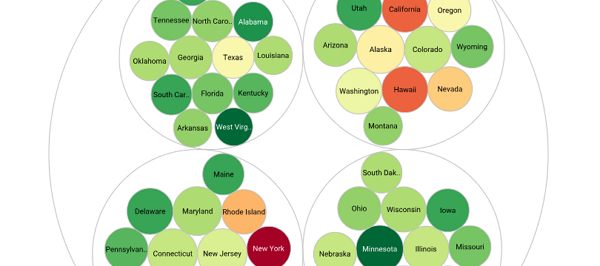Prerequisites For Good Reporting
This is the transcript of a Webinar hosted by InetSoft on the topic of "Prerequisites For Good Reporting: Data Governance." The speaker is Abhishek Gupta, product manager at InetSoft.
Today we’re talking about one of the prerequisites for good reporting which is data governance. You’re going to learn more about this often complex process of managing decisions and policies around data ownership and data usage throughout an enterprise, and that’s putting it simply. If we can just start by level setting, what is the definition of data governance? What does that term actually mean?
Well, let me start by reading you our sanctioned definition of data governance and then look at what it means. So here goes. Data governance is the decision making and oversight process that prioritizes investments, allocates resources and measures results to ensure the data being managed and deployed in companies is leveraged to support business needs.
Another way of defining data governance is that is the decisions rights around IT decision making. So decisions rights means basically the authority to make decisions and policies around an asset. So data being a corporate asset, which we all know it is, data governance is really the decision rights around data as a corporate asset.
Why Is It So Important To Establish A Sound State Of Governance?
And data governance is something we’ve been hearing about a lot as a starting point for customer data integration, master data management, or other kinds of data management projects. Why is it so important to establish a sound state of governance before getting started on those kinds of programs?
Well, it’s ideal to begin a business intelligence project or an MDM project with formal data governance because the business needs to come up with the policies around the meaning and the usage of the data before it’s deployed to the systems to the users that need it. And you know, we’ve all heard the horror stories of our company can’t agree on the definition of customer, so I don’t know what I’m looking at when I look at this data.
Unfortunately this happens a lot, so we are counseling our clients right now to be governance aware and to start putting the pieces in place, either before or as they begin an initiative like master data management, or customer data integration. So for most of our clients it is easier to pitch something like a CDI or an MDM project to business executives, because they can see through the technology what the results will be, than it is to convince them to participate in a data governance project. So we’re saying piggy back data governance on some of these activities. You can socialize it as you’re delivering results with the technology.
Some of the techniques of data governance has been around since the 1970’s. But I read recently that 90% of data governance projects fail at their first attempt. I put these statistics together and it sounds funny to me, like best practices haven’t been sorted out in the last 30 years? Why is this discipline so difficult? Why would so many people fail?
I think it, part of that is the terminology is different, and right now people hear the word governance and immediately for some reason they think committee. So you can watch what’s happening in companies today. Somebody sees an opportunity to align data around business processes and they start trying to convince people to participate in a governance committee. And these business people are thinking, well what’s data governance? And how is this going to work? And what do I need to do? And what are my responsible for?
And so they attend a couple of meetings. They go to a meeting over lunch, and none of these questions are answered. How will this work, and what are my responsibilities. None of these questions are answered in the first meeting, and there’s really no clarity beyond general consensus that data is an asset. Everybody’s nodding their heads. And then what happens the data governance effort starts to break down.
Data governance can even become a dirty word over time. And that’s really a shame because it really solves some important problems when it’s done right, but there is this rapid dis-affection of constituents when it comes to data governance if it’s treated as a series of meetings, or a big committee.
So what are some guidelines for making data governance a success now? This is really interesting because not a lot of people are approaching data governance this way, but the secret is to design it. And I know it sort of sounds obvious, but this tends to scare people. I think it’s a human tendency to immediately enlist other people. But unless data governance is really designed, and by that I mean looking at the company’s specific culture, its organizational structure, the decision making processes, and the immediate business requirements that data governance can address.
Conversations about data governance just won’t seem relevant to people, and it risks becoming an intellectual exercise. So sort of back to that prior example I gave, people will convene for a period of time and in the spirit of good will and in the company’s interest, but over time taking the time to deliberately design data governance with company specific factors in mind can lay out the framework that you need to really be able to pitch it. And to really answer a lot of those unasked questions like I talked about before and enlist people the right way. And it just becomes a heck of a lot easier to really get people involved in a sustained data governance activity, as, as sort of a formal and ongoing process when those questions are answered in advance through rigorous design of governance.


